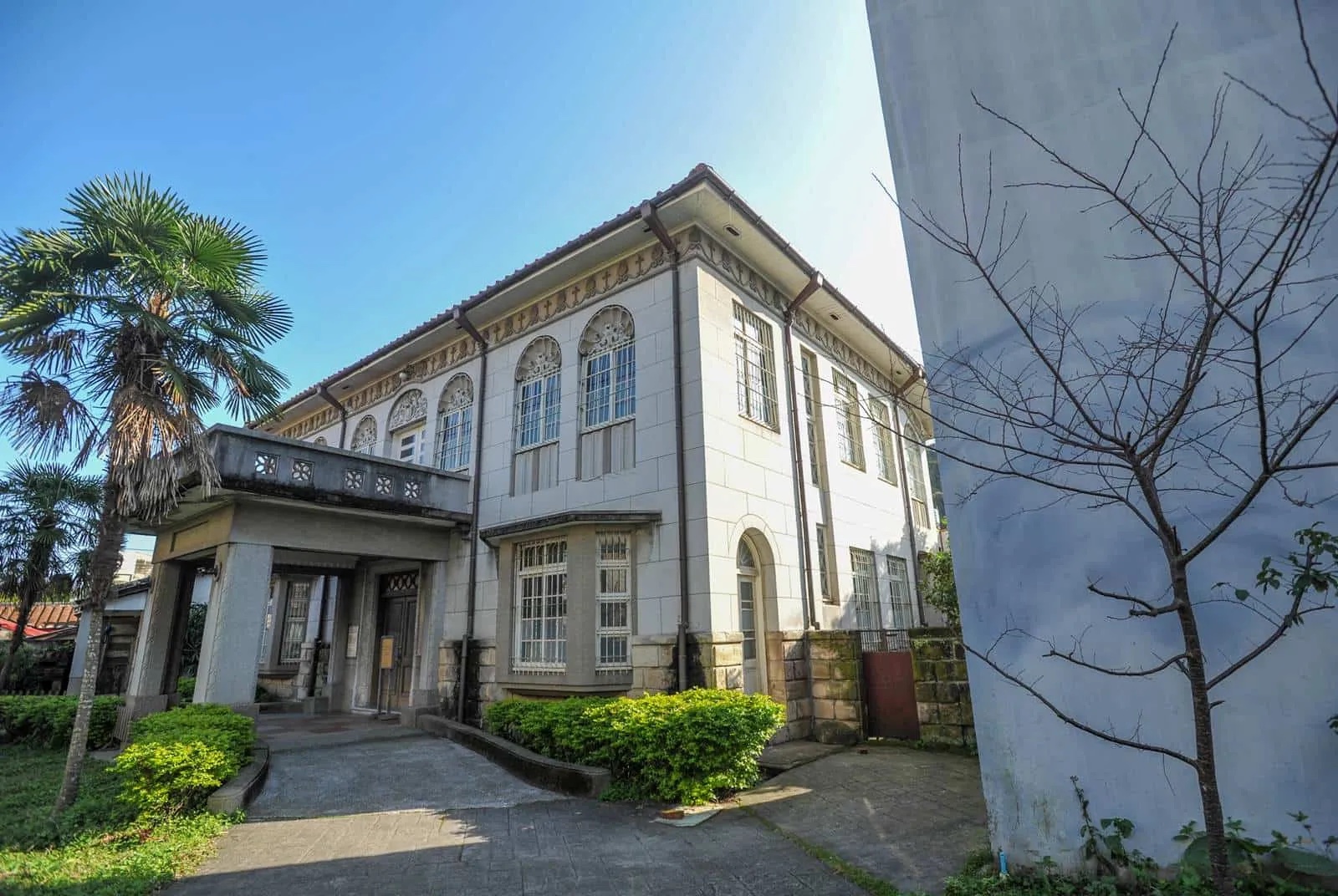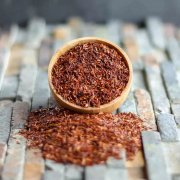Taiwan history drama! Behind the scenes of Tea Gold, the History and Drama of Jiang Ah-hsin House, Taiwan's strongest Tea Merchant
Gold Leaf--the English title of the latest drama "Tea Gold", throws a suspense: What leaves can be like gold?
This leaf is black tea. There was a time when tea was more expensive than gold, and Europeans were popular with tea, but tea was only produced in China, Taiwan, Assam, India and a few other regions. Formosa Tea is exported worldwide, from cultivation to production to international marketing.
"Tea Gold" is based on Jiang Axin, the real Hakka first tea merchant. The shooting scene is in Xinzhubeipu, Jiang Axin's former residence.
It took three years and was completed in 1949. It is a milestone in Jiang Axin's career and is now listed as a historical monument.
On the second floor terrace of Jiang's new foreign-style building, overlooking the Jiang family's original residence and the national monument "Tianshui Hall".
But history is different from drama. After Jiang Axin's career collapsed, his only daughter did not become a strong woman,"involved in the debt-ridden family business", nor "in a tea business war, leading the crumbling tea factory to the world."

The real version of the heroine is a traditional woman, family decline, from playing the piano daughter, to embroider the number of women, is now 90 years old. When her children grew up, they bought and repaired the grandfather's building.
The real version of the Jiang family was a prominent family that had opened up Beipu. It was not a small love affair, but a magnificent one. Another award-winning Asian film, 1895, is also based on their family.
What kind of family is this?
A family of armed settlers
Originally an aboriginal habitat, Beipu is now 95% Hakka, a change that occurred nearly 200 years ago. Jiang Xiuluan, the ancestor of Jiang Family, led people to this reclamation under the support of Qing Dynasty. They were an exploration organization with force. At that time, there were similar pioneering organizations and buildings in the whole province, called "mansions".
The residence on Roosevelt Road in Taipei City and the residence in Miaoli both have the same meaning, but all the "residence" buildings in Taiwan have been demolished, leaving only this unadorned Jin Guangfu residence. At first glance, it looks like an old house, but in fact it is an important page in the history of the ancestors. The government announced the first batch of 15 national monuments, and Jin Guangfu Mansion was among them.
Although there are shops in Peipu Old Street, it is actually a historical site. Besides Jiang Ah-hsin's mansion and Jin Guangfu's residence, there was also Citian Palace. The whole of Beipu can be said to be a village expanding around Citian Palace.
advertising
This temple is wonderful inside and outside. This was the first time I stepped into the temple. I was really shocked. Besides worshipping gods, how could there be worshipers here? Who could "sit" in a temple of historical significance? Upon closer inspection, it turned out to be the ancestor of the Jiang family, which was also the ancestor of the Tea Tiger Jiang Axin.
The Fine Art of Oriental Mosaic
It is said that the Goddess of Mercy enshrined in the Heavenly Palace was brought over by Jiang Xiuluan from the mainland of China. When this Hakka from Guangdong and Fujian jointly organized "Jin Guangfu" to cultivate, he brought the statue to Beipu. At the beginning of the reclamation, every time there was a war, the settlers would go to seek peace.
The temple's "cut-out"(also known as cut-out porcelain carving) on top is lifelike and one of the best in Taiwan. After a cursory glance, it is easy to think that it is a general colorful, and miss an art.
The Tzu Tien Temple in Peipu has a history of more than 100 years, and there is a superb art of cutting and gluing at the top of the temple. (Provided by Wang Wenjing)
Shear adhesion originated from the coast of the mainland of China. This traditional architectural craft, bright bowls and plates and other porcelain, broken into small pieces of raw materials, and then collage to create characters, animals, flowers or folk stories, often expressed in temples, some people referred to as "Oriental mosaic."
advertising
Holiday and non-holiday in Beipu are two different people. Walking in Beipu, which is not a holiday, is especially quiet, as if breaking into a nameless poem. Even an earthen corner house and a stone slab under its feet are stories.
I especially like the large balcony on the second floor of Jiang Ahsin's foreign building, overlooking the national monument "Tianshui Hall," which is the home of the Jiang family, a large building complex, and also the scene of the movie "1895."
What a magnificent family! As I entered the courtyard, I slowly counted the ancient tiles, waiting for the tile owner to open the door and tell a story.
Jiang Ah-hsin's name looks rather "earthy", but in fact Jiang Ah-hsin is not earthy at all. He was born in 1901 and was the youngest son of the Jiang family in Hsinchu. He probably named Jiang Ah-hsin "earthy" because he wanted to be "easy to raise". Jiang ah's new character Mao Xi-cultured enough?
Young Jiang Axin studied at Meiji University in Japan. At the age of 31, he founded a tea factory in his hometown. He cooperated with Mitsui Agriculture and Forestry in Japan and Jardine Matheson in Hong Kong to produce black tea for export. At the height of his career, Jiang Axin's tea factory occupied more than 4,000 ping, with a variety of modern tea making equipment. It was a large tea factory at that time. With his style of Westernization and international vision, he once blew a "Jiang Axin whirlwind" in Taiwan's tea industry. Jiang Axin's success in tea business was not only related to his courage, courage, enterprising spirit and innovation, but also related to the international environment at that time. During World War II and the early postwar period, the important black tea producing countries in Southeast Asia suffered heavy losses, giving Jiang Axin the opportunity to "make waves". From the 1950s onwards, the highly competitive black tea producing countries began to recover, which made Jiang Axin's tea business suffer greatly. In addition, he expanded excessively and had difficulties in cash flow. His tea kingdom completely collapsed in 1965.
1946 was probably the most prosperous year of Jiang Axin's tea business. In this year, he not only established "Yongguang Company" on the basis of the original tea factory, but also built a foreign building for his own residence and special reception for distinguished customers. This building is exquisite in materials, unique in style, exquisite in workmanship and costly. It takes three years to complete. From the outside, the whole building was pale yellow, sitting north to south, square solemn, up and down two floors, there is a front porch outside the front door, parking ramp around, extraordinary style. Into the floor, the first floor floor paved, simple style, the second floor window was round arch, is the European style. Western-style buildings from the outside to the inside, both Western-style modern, but also traditional dignity, filled with a combination of Chinese and Western, ancient and modern charm.
When Jiang Axin's career suffered setbacks, this foreign-style building was forced to sell. What is interesting is that decades later, when this building was to be resold, the descendants of Jiang Ah-hsin scattered all over the world raised funds to buy it back, spent huge sums of money to restore it to its original state, and donated it free of charge, naming it "Jiang Ah-hsin's Building," as a cultural monument in Hsinchu, free for visitors to see.
The history of "Jiang Axin Yanglou", which was lost and recovered, makes people sigh: it is undoubtedly the best memory for our ancestors that our descendants "return" this building in this way.
- Prev

The price of the "national treasure tea" of South Africa's three treasures has risen after it has been certified by the European Union.
South Africa's national treasure tea, which is rich in natural nutrition and free of caffeine, has become very popular in the beverage market in recent years. In May this year, it was certified by the European Commission and protected by its name of origin, making it the first crop in Africa to obtain this certification, which means that even with the same use.
- Next

India's World Heritage Chen Yin Calls for Privatization, Government Strives for Economy, Residents Lost Their Jobs
Darjeeling Himalayan Railway (DHR), listed as a World Heritage Site by Unesco, is located at the junction of India, Bangladesh and Nepal. It is the most famous railway in India and even in the world.
Related
- A one-day flower show brings 130 million yuan in orders! Nanhai, this Phalaenopsis exhibition is amazing
- What do the flower language and meaning of Lutheran tree mean? Precautions for planting Lutheran tree
- Encounter Chaoshan Kongfu tea, not without this cup of Phoenix single clump
- The durian market in Vietnam and Thailand is flooded. The price of imported durian has plummeted by 30-40% in a month.
- Shanghai solved the problem of local vegetable supply by planting 80,000 mu of green leafy vegetables.
- Wageningen University has become the best agricultural university in the world for the seventh time in a row.
- The strongest export season of South African grapes is full of challenges, with exports to Russia falling sharply by 21%.
- Sri Lanka is on the verge of bankruptcy, "Tea for debt" Organic Agriculture Revolution aggravates the Food crisis?
- Turning waste into earthworm manure and worm manure into organic fertilizer-A new choice for auxiliary farming
- Organic rice growers shoulder the responsibility of nurturing agricultural talents! Yinchuan Sustainable Farm with Organic Life Camp

